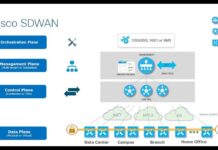Before your organization makes an investment to support your Disaster Recovery (DR) strategy, make sure you understand the pros and cons of each choice. For some organizations, on-premises disaster recovery may be the right solution, while other organizations can save money and get the best disaster recovery protection with a cloud-based disaster recovery solution.
What is cloud-based disaster recovery?
Cloud-based disaster recovery is a service offered by third-party cloud providers that ensure your company’s business continuity by replicating your systems and data to a public or private cloud infrastructure, and managing the failover and switchover process for recovery when a disaster occurs. Cloud-based disaster recovery is also called Disaster Recovery as a Service (DRaaS).
Companies of all sizes use cloud-based DR and pay for services through a contract or a monthly or annual fee.
On-premises disaster recovery solution
On-premises disaster recovery refers to a solution where your secondary disaster recovery systems are located where your production systems are located. This can be an expensive option because it requires your organization to:
Hire technical IT staff to develop, test, and execute your disaster recovery strategy.
Back up your systems and data and keep these backups in an on-premises data center, physical machine or Virtual Machine (VM), or on-premises stored disk or tape .
Invest in hardware, software, maintenance and support for hardware and software.
Advantages of cloud-based disaster recovery
Cloud-based disaster recovery can help your organization minimize downtime and data loss to ensure business continuity, reduce disaster recovery costs, and help you meet regulatory requirements.
Whether it’s a flood, hurricane, tornado, fire, cyber attack or man-made disaster that destroys or brings down your production systems, downtime can bankrupt your business. With cloud-based disaster recovery, the cloud provider replicates your systems and data to a cloud infrastructure that is at least 150 miles away from your production systems. This geographic distance is important to minimize the chance of the same disaster impacting your production systems and cloud-based disaster recovery site. When a disaster strikes your production systems, the cloud provider orchestrates disaster recovery: failing over production systems to the cloud-based disaster recovery site and failing back to the primary site once the IT infrastructure is back in place. The cloud provider ensures that your organization achieves the agreed Recovery Point Objective (RPO) and Recovery Time Objective (RTO), which are defined as:
- Recovery Point Objective (RPO): The maximum amount of time you are willing to lose data on your systems due to an event.
- Recovery Time Objective (RTO): How quickly you can recover from the time of a disaster to the time you return to normal operations.
Reputable cloud providers offer a guaranteed Service Level Agreement (SLA) that dictates these terms, ensuring your systems and business are back up and running quickly while minimizing data loss.
Lower disaster recovery costs
With cloud-based disaster recovery, you can reduce costs and enjoy peace of mind because:
Smaller businesses can eliminate the need to hire DR experts to manage local DR.
Larger IT teams can focus on core operations rather than planning, testing, and executing disaster recovery.
The cloud provider will arrange backup, failover, and failback services and keep your backups in a safe and secure data center.
You will not need to invest in the purchase and maintenance of duplicate hardware or software.
Enable compliance
If your organization is legally required to comply with government or industry regulatory requirements such as HIPAA, GDPR, PCI, SOC 2, Managed Disaster Recovery can help you stay compliant without the need to hire in-house compliance experts . Reputable cloud providers can ensure compliance with the controls you require, so it’s important to ask the right compliance questions when looking for cloud disaster recovery providers.
Disaster recovery in the cloud vs. on site
While cloud-based disaster recovery can mitigate downtime, reduce disaster recovery costs, and enable compliance, on-premises DR also has some advantages:
Minimizes the chance of data loss, as on-premises disaster recovery replicates data in near real-time over a Local Area Network (LAN), rather than an older Internet connection slow used to replicate data to a cloud infrastructure.
Reduce latency when disaster strikes or when you need to recover selected files/folders. It is faster to access an on-premises system over a LAN than it is to navigate an Internet connection to access a cloud infrastructure.
Predict the ongoing costs of an on-premises disaster recovery solution more accurately, as cloud-based DR costs will increase when a disaster strikes and your organization actively accesses cloud infrastructure for day-to-day operations.
Compared to a cloud-based disaster recovery solution, there are downsides to an on-premises disaster recovery solution. For example, your organization:
You must invest in hardware, software, and ongoing maintenance for the facility site.
You must hire technical IT staff to develop, test, and execute your disaster recovery strategy.
You must ensure that your disaster recovery strategy meets all necessary compliance requirements.
You can lose all of your systems and data because an on-premises disaster recovery site can be vulnerable to a disaster, such as a flood, fire, storm, cyber attack, affecting your production systems.
Acronis solution for cloud disaster recovery
While only 6% of disasters are natural, the remaining 94% are man-made and are much more likely to affect your business. A modern disaster recovery solution ensures that your organization can continue operations, regardless of the type of disaster.
Organizations with larger IT staff and budgets may choose to manage disaster recovery in-house with a comprehensive solution like Acronis Cyber Disaster Recovery. This solution is easy to deploy and maintain and ensures that all cloud-based or on-premises production workloads are immediately available when a disaster strikes.
Alternatively, Small and Medium Businesses (SMBs) with smaller IT budgets and minimal IT staff can rely on a Managed Service Provider (MSP) that can offer a cloud-based disaster recovery through a platform like Acronis Cyber Cloud. With Acronis cloud-based disaster recovery solution, an MSP can remotely monitor, deploy, test, and manage all of their data and provide multiple layers of protection, including backup and disaster recovery.













